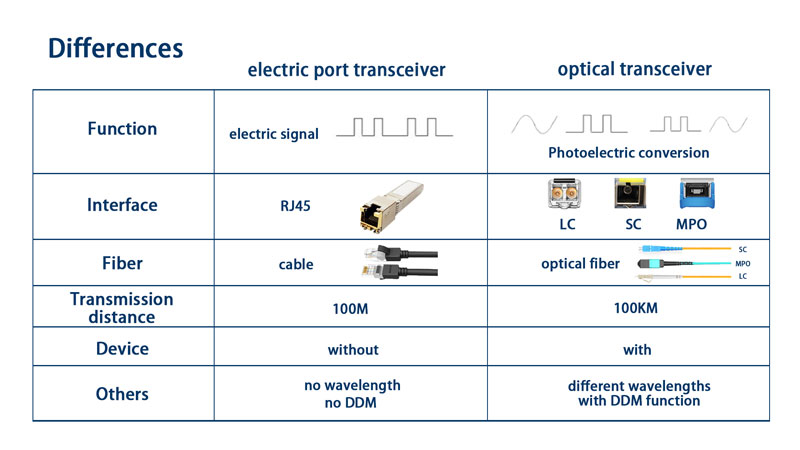①Function: optical transceiver is to perform the photoelectric conversion; Copper RJ-45 Transceiver is only to transmit the electric signal;
②Interface: the interface of the copper RJ-45 transceiver is RJ45 and optical transceiver has LC , SC and MPO interfaces;
③Connection cables: the copper RJ-45 transceiver is connected with the network cable and the optical transceiver is connected with the optical fiber jumper;
④ Transmission distance: the maximum transmission distance of the copper RJ-45 transceiver is 100M, while optical transceiver can reach more than 100KM;
⑤Device: copper RJ-45 transceiver does not have a laser while the optical transceiver has;
⑥Parameter: copper RJ-45 transceivers do not have operating wavelength and DDM information, while different optical transceivers have different operating wavelengths, and most are with DDM function. Because of the laser, the power consumption of copper RJ-45 transceivers is also lower than that of optical transceivers.
From above, we can know that the copper RJ-45 transceiver can be used for short distances with network cables, with lower power consumption. In the data center of copper cabling, copper RJ-45 transceivers are more widely used and lower in cost. The optical transceiver should be selected when the transmission distance is relatively long.


